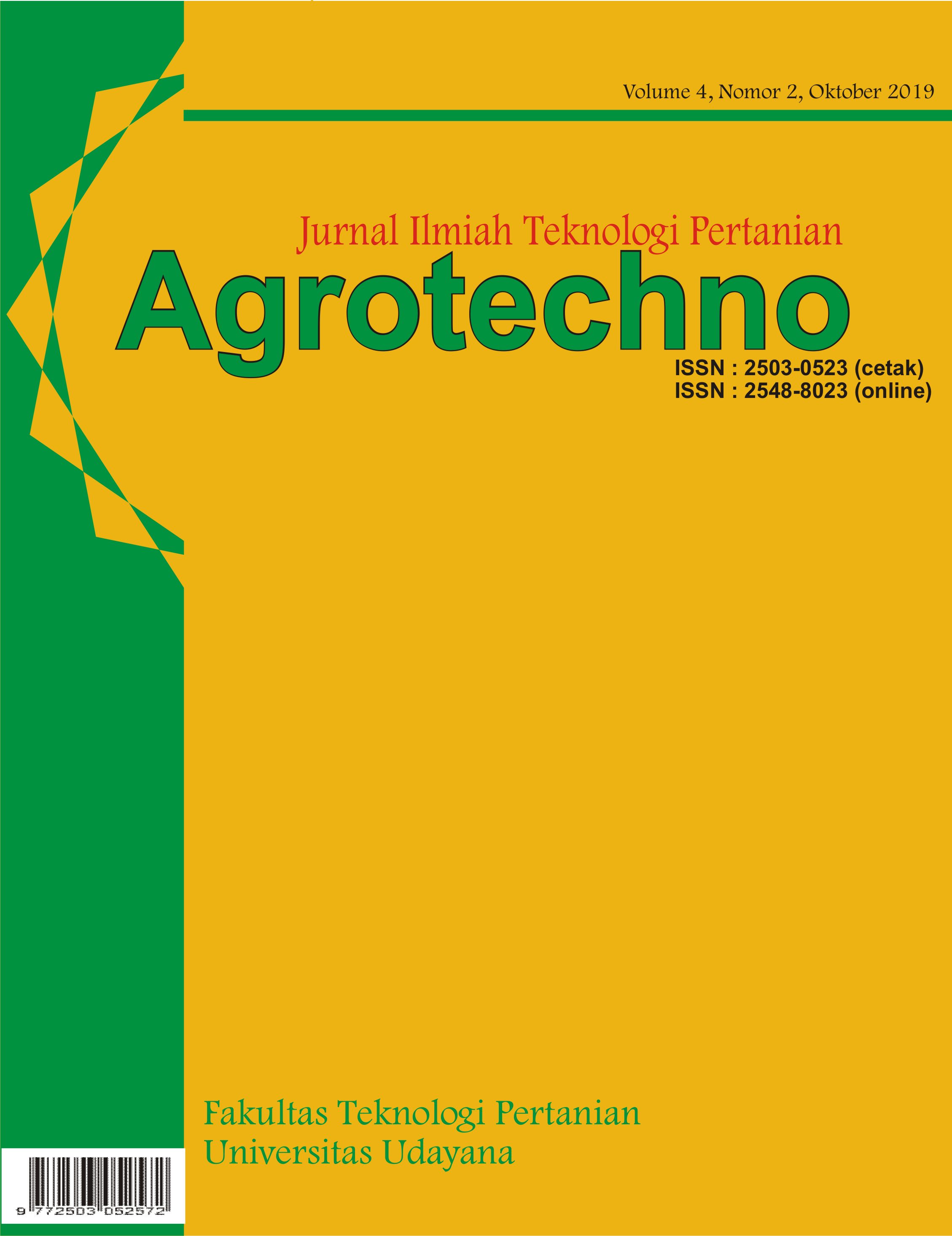Kadar Glukosa Darah dan Gambaran Histopatologi Ginjal Tikus Diabetik yang Diberi Diet Tempe Kacang Gude (Cajanus cajan (L) Millsp)
Abstract
The specific purpose of this study was to determine changes in blood glucose levels and histological features of diabetic rats that were given a diet of pigeon pea (Cajanus cajan (L) Millsp) tempeh. The stages of the research included making the pigeon pea tempe, making standard and treatment feed and followed by bioassay testing using alloxan-induced diabetic rats. The analysis included proximate analysis, fiber and antioxidant capacity in raw materials, analysis of blood sugar, weight weighing and observation of kidney histopatological. The results of this study are expected to be beneficial for the development of pigeon pea as functional food, especially for the dietary therapy of patients with diabetes mellitus. The results showed that the feeding of pigeon pea tempeh showed hypoglycemic effect which was marked by a decrease in rat blood glucose levels from 323.68 mg / dL to 200.37 mg / dL. Observations on renal histology showed that the PS (-) and PTKG groups showed almost the same glomerular condition and fewer cells experienced necrosis compared to the PS (+) group.
Downloads
References
Astuti, M., A. Meliala, F. S. Dalais and M. L.Wahlqvist. 2000. Tempe, a nutritious and healthy food from IndonesiaAsia Pacific J Clin Nutr 9(4): 322–325
AOAC. 1990. Official Methods of Analysis. 15th ed. Vol. 2. Virginia
Bintanah, S. dan H. S. Kusuma. 2010. Pengaruh pemberian bekatul dan tepung tempe terhadap profil gula darah pada tikus yang diberi alloxan. Jurnal Pangan dan Gizi 1 (2)
Bondy, P.K. and Rosenberg. 1980. Metabolic Control and Disease. 8th ed. Tokyo: Saunders Company.
Dewi, I.W.R., C. Anam dan E. Widowati. 2014. Karakteristik sensoris, nilai gizi dan aktivitas antioksidan tempe kacang gude (Cajanus cajan) dan tempe kacang tunggak (Vigna unguiculata) dengan berbagai variasi waktu fermentasi. Biofarmasi 12 (2) : 73-82
Ganong, W.F. 1993. Review of Medical Physiology Lange Medical Publication. San Fransisco, California.
Mardiastuti, E. 2002. Gambaran Histopatologi Organ Hati dan Ginjal Tikus Diabetes Mellitus yang Diberi Infus Batng Brotowali (Tinospora tuberculate L.) sebagai Bahan Antidiabetik. Skripsi. Institut Pertanian Bogor.
Nelson, R.W. 2010. Canine Diabetes Mellitus. Textbook of Veterinary Internal Medicine 7th Ed. : 1782 -1796
Reeves, P.G., F.H. Nielsen dan G.C. Fahey. 1993. AIN-93. Purified Diets for Laboratory Rodents: Final Report of the American institute of Nutrition Ad Hoc writing Committee on the Reformulation of AIN-76 Rodent Diet. J. Nutr. 123 : 1939-1953
Satyari, N.P.R., N.W. Wisaniyasa dan N.K. Putra. 2016. Studi Sifat Kimia, Fisik dan Fungsional Tepung Kacang Gude dan Tepung Tempe Kacang Gude (Cajanus cajan (L) Millsp). Skripsi. Fakultas Teknologi Pertanian. Universitas Udayana
Taguchi, Y. 1985. Experimental Animals. Tokyo: Clea Japan, Inc.
van Loon, L.J.C., Kruijshoop, M., Menheere, P.P.C.A., Wagenmakers, A.J.M., Wim, H.M.S. dan Hans, A. K. 2003. Amino Acid Ingestion Strongly Enhances Insulin Secretion in Patiens With Long-Term Type 2 Diabetes. Diabetes care : 26 (3), 625-630.
Wang and Murphy. 1996 dalam Villares et al. Food Bioprocess Technol 10 : 1-12. Content and Profile of Isoflavones in Soy-Based Foods as a Function of the Production Process. 2009.
Wibowo, E.W. 2004. Kiat Merawat Kaki Diabetes. http://www.waspada.co.id/cetak/index.php?article_id =37246, diakses pada tanggal 10 Juni 2016
Widowati, S. 2007. Sehat Dengan Pangan Indeks Glikemik Rendah. Warta Penelitian dan Pengmbangan Pertanian. Vol 29 No 3.
Wulan, S.N., M.Astuti, Y. Marsono dan Z. Noor. 2000. Pengujian Efek Antioksidatif Kedelai, Fraksi Protein Kedelai dan Tempe pada Tikus yang Diinduksi Diabetes dengan Injeksi Alloxan. Proseding Seminar Nasional Industri Pangan : 175-182
Yusasrini, N.L.A. dan A.A.G.N.A. Jambe. 2018. Efek Hipoglikemik Diet Kacang Gude (Cajanus cajan (L) Millsp) pada Tikus Diabetik. Agrotechno 3(2) : 367-372










